This article outlines the Iconic South Indian temples and their architecture. Every sanctum, corridor, detailed stone carvings and beautiful wall paintings reflects sheer craftsmanship and scientific precision. While south India has been home to best-known delicacies, cultural heritage, and classical art, it is most renowned for its rich temples and astounding structure design. These temples are a concoction of art, science, literature and show the scale of each dynasty that ruled over the land. As the proverb says, “A temple's architecture whispers stories of ancients.”
Where art meets divinity

Imagine how, thousands of years ago, people built temples with accurate geometry and scientific calculations and infused music and art into divinity. No supercomputers or gigantic machinery. Only with pure brilliance, mastery of craft and of course, loads of determination could one achieve this feat.
South India’s temple architecture is predominantly Dravidian style with a mix of other styles that reflect their influence over that period. It has intricately carved sculptures that echo tales that withstood time.
Brihadeeswara Temple
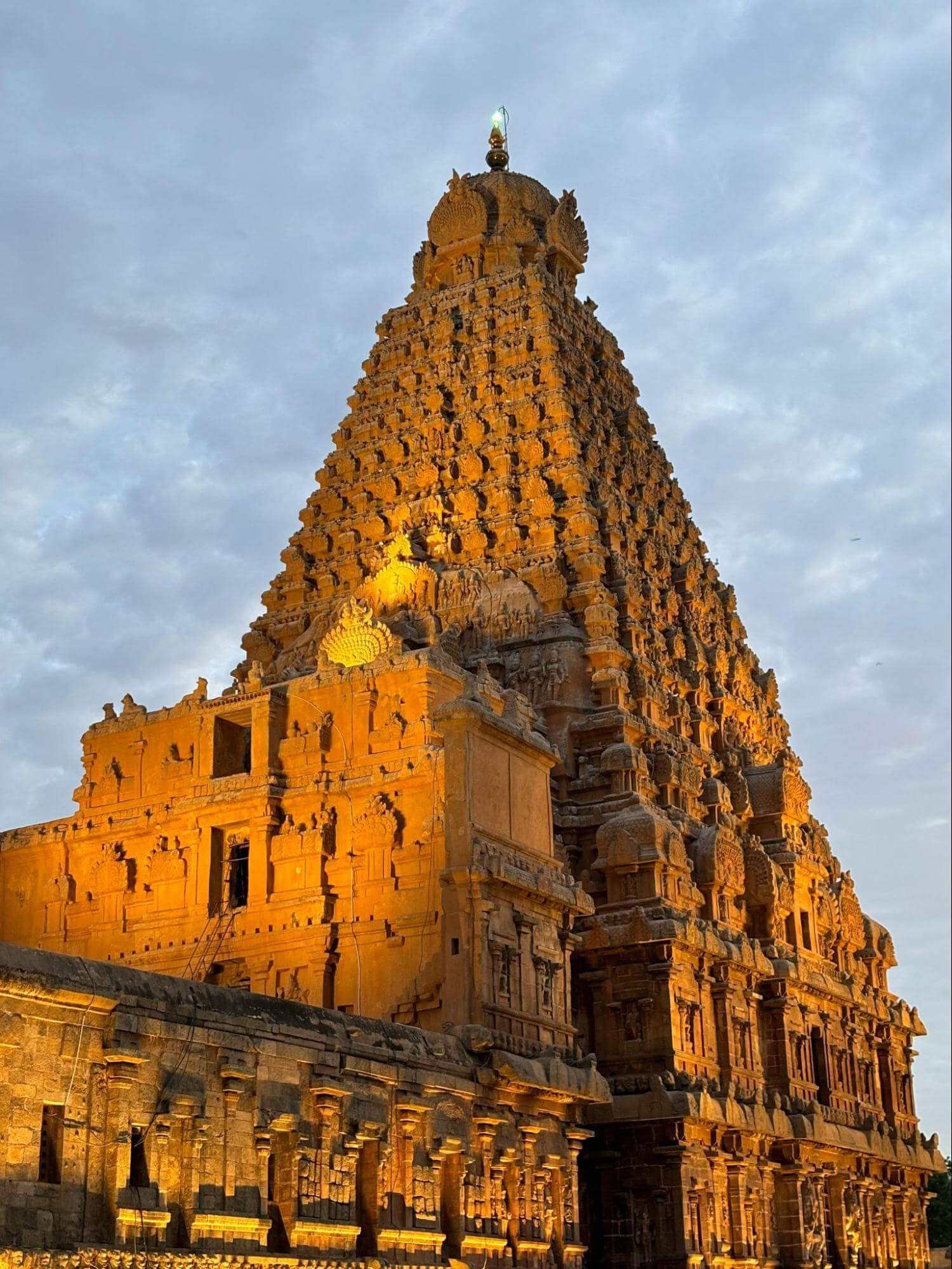
Also called ‘Tanjore Big Temple,’ built by the great Raja Raja Chola I of the Chola dynasty. It is located in Thanjavur, the capital of the Cholas. It houses the main deity as Lord Shiva. One main attraction is the big statue of Nandi, the sacred bull of Lord Shiva, standing at 13 feet high and 16 feet wide. This one of a kind heritage site features vimanas (temple towers) reaching up to 216 feet high. They are adorned with a kalash on top. Carved out of a single rock without solid technology, this architectural marvel never ceases to amaze.
The temple includes stellar wall carvings and Tamil inscriptions that mention people who donated towards the construction of the temple. The names range from kings to local inhabitants of the land. UNESCO included this stupendous structure in World Heritage for its cultural significance.
Madurai Meenakshi Temple
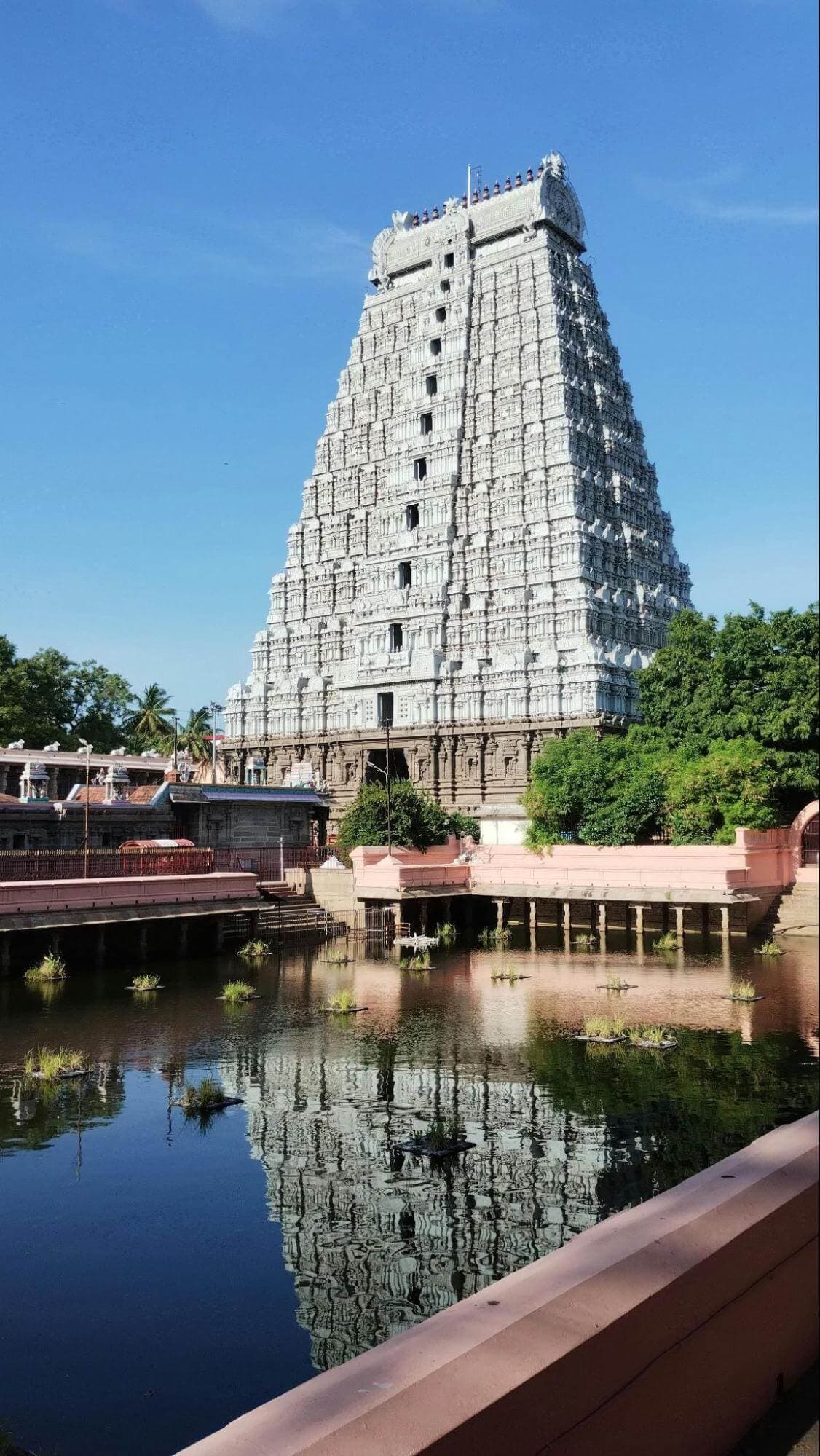
Legend has it that Meenakshi is the Pandian princess born out of fire who later got married to Lord Shiva, and this divine union is celebrated across the vibrant city as a 10-day celebration during summer of the year. The temple's murals and scriptures depict Lord Vishnu as her brother, who also partakes in the wedding.
The streets around the temple are routed in perfect concentric squares. The design of the temple allows the rainwater around the four corners of the temple to be channeled to the central Golden Lotus Tank which is surrounded by the sacred pond. This design choice would become the blueprint for present-day rainwater harvesting and storage. The thousand-pillar hall is a music marvel; it produces rhythmic tunes upon striking it.
Built by Pandian king Kulasekaran I, it is located in the city of Madurai, the cultural capital of South India, and it is one of the prime examples of Dravidian architecture.
The Shore Temple

You can’t talk about temple art and architecture without mentioning the Pallavas.
The Pallavas were passionate about music, dance, art, sculptures, and literature, which made them pioneers of art forms that inspired subsequent rulers of South India.
The Pancha Rathas is a monumental emblem where each chariot is carved out of a single rock. These five monolithic rock-cut structures represent the Pandavas from Mahabharata, the ancient Indian epic.
The Shore Temple is situated in Mahabalipuram on the coast of Tamil Nadu. It has shrines for Lord Shiva and Lord Vishnu with stepped stories with a cupola-like structure positioned over the top. There are finely crafted sculptures in the rock detailing the epic of Mahabharata.
Chennakeshava Temple
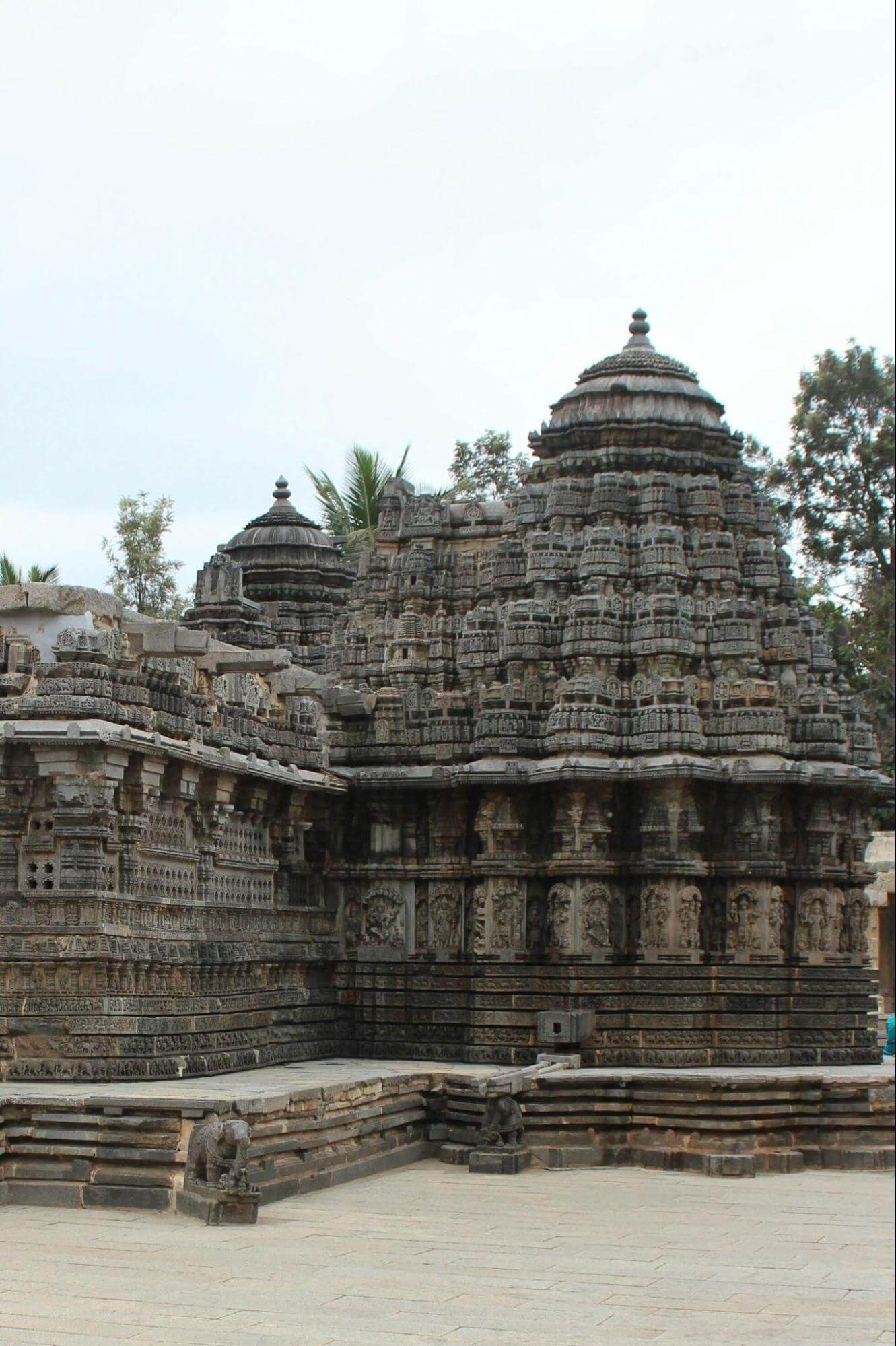
The temple dedicated to Lord Vishnu located in Somanathapura, Mysuru, in Karnataka was built by the Hoysalas. They’re particularly known for complex and elaborately crafted monuments.
Basically, with Hoysala’s architecture, one would question whether to watch out for their fine etchings or to seek divine blessings! The carvings go from intertwined foliage to elephants in ascending rows to swans to sculptures and a star-shaped mandap decorating over the temple top.
It’s almost as if the carvings beckon you to experience their rich, layered textures.
The Hoysalas usually dedicate their temple either to Lord Shiva or Lord Vishnu, made of soft soapstone instead of granite or rocks. The engravings range from flowers and leaves to horses and swans to the epics of Ramayana and Mahabharata.
Virupaksha Temple
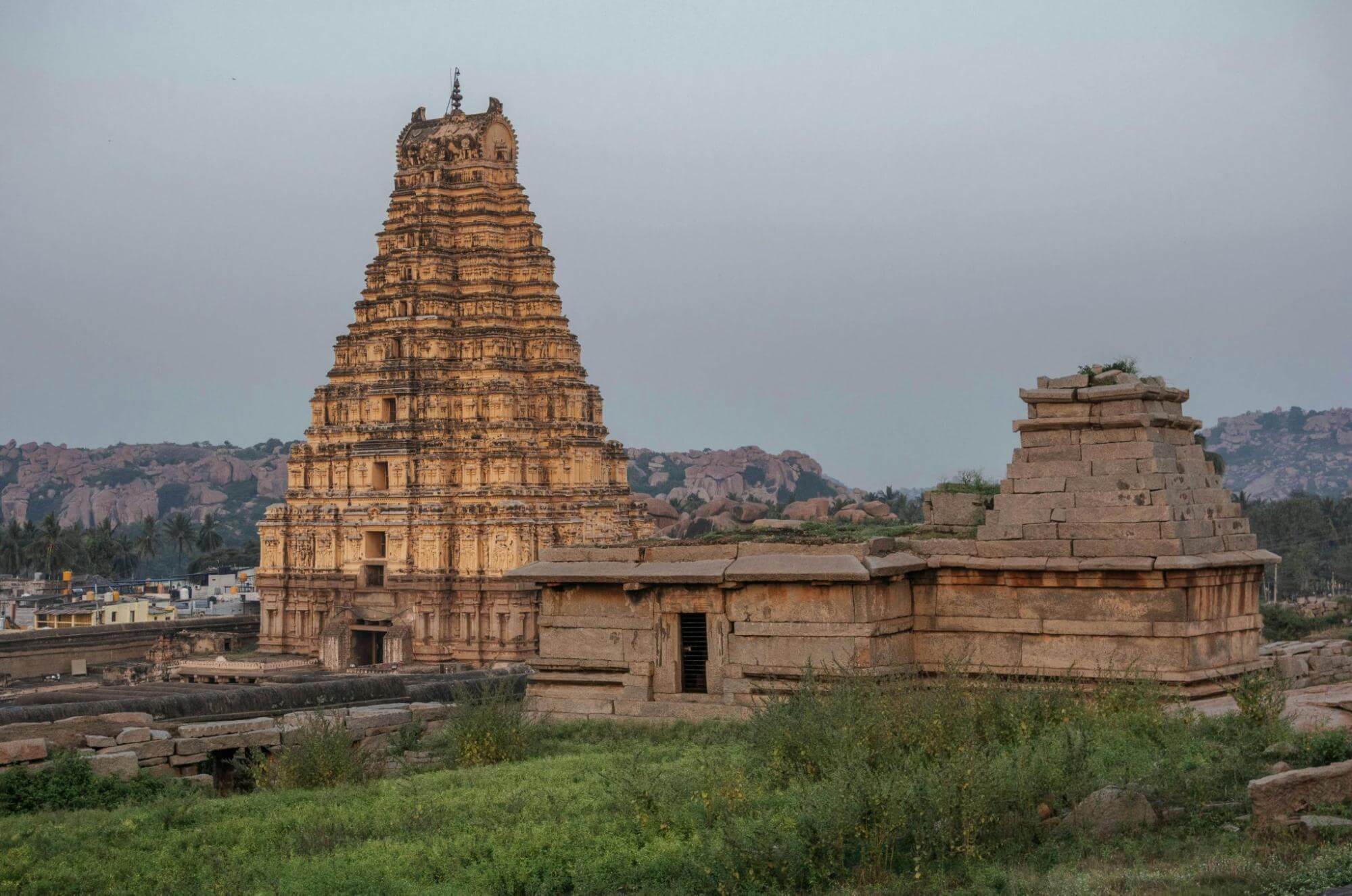
Virupakasha Temple, located in Hampi, Karnataka, was built by the Vijayanagara King Krishna Deva Raya. Lord Shiva and Pampa Devi are entailed in the shrine. The divine betrothal and wedding of two invites celebration across the town during February of every year.
This construction follows a blend of Dravidian and Sultanate architecture. The design is based on symmetry, patterns, and mathematical concepts, signifying the rich knowledge of science and math amongst the people.
The temple complex is square-structured with tiered towers, and the water from the River Thungabadra is channeled into the kitchen area.
Ramanathaswamy Temple
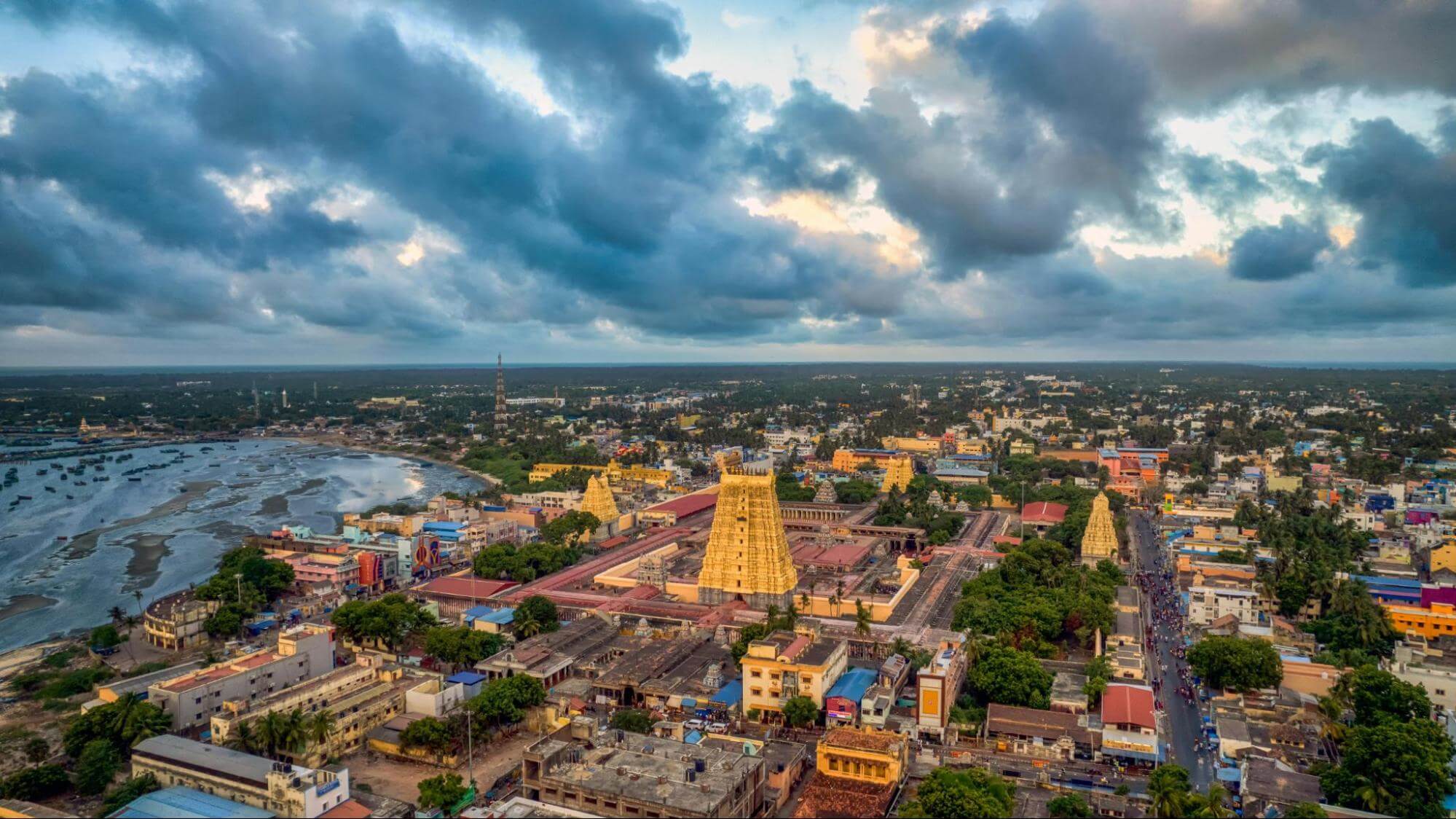
This temple was founded by Lord Rama, who returned after his victory over Ravana in Lanka, and later expanded by Pandian kings. Here Lord Shiva is revered in the form of a lingam.
One lingam was established by Lord Rama, and another lingam was brought by Hanuman from Kailash, the divine abode of Lord Shiva.
It is a jewel in Dravidian architecture, following a majestic multi-storied tower depicting inscriptions covering sculptures of deities and celestial beings to mythological creatures.
The temple comprises 22 sacred water tanks, which are believed to have a spiritual cleansing effect for people warding off their worldly sins.
Keep Exploring

Even the smallest village will have a hub of temples. Delving into the temple architecture paints you a picture of the people’s knowledge of art and science, their local culture, and their history during those periods. What I covered is a minuscule part of a divine journey; there are a whole lot of temples in South India. Many say one should visit a temple for peace and spiritual healing, yes, but also it gives perspective on other people’s lives, which makes you wonder about the uncertainty of the materialistic world.